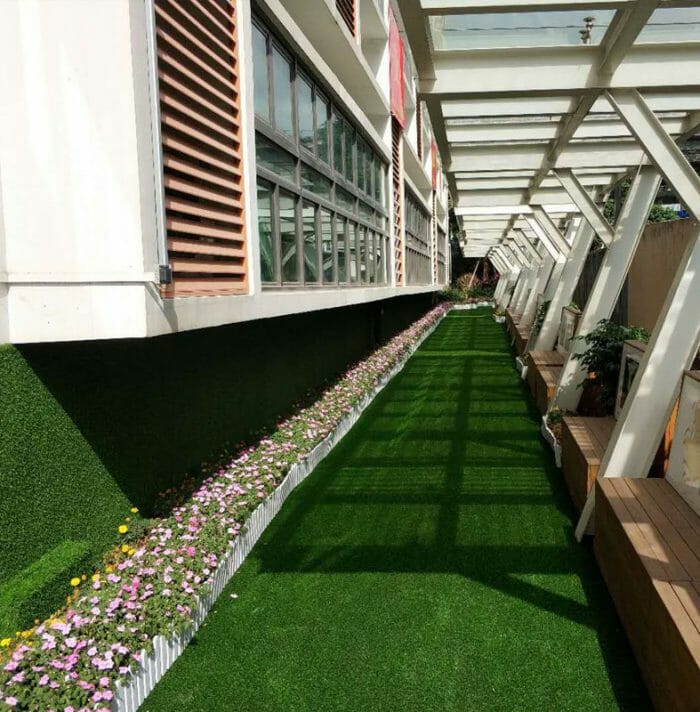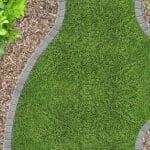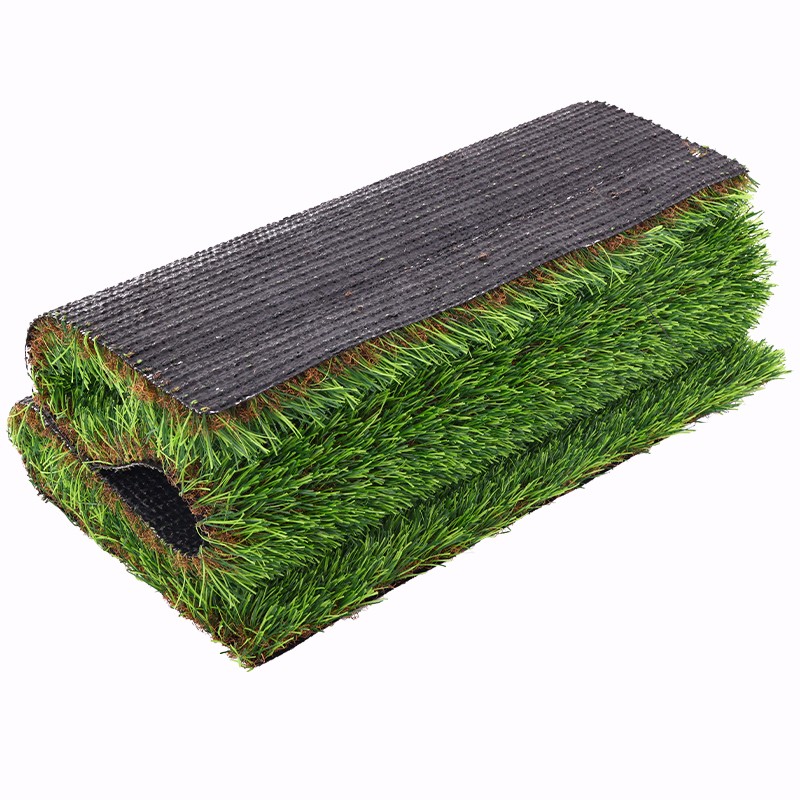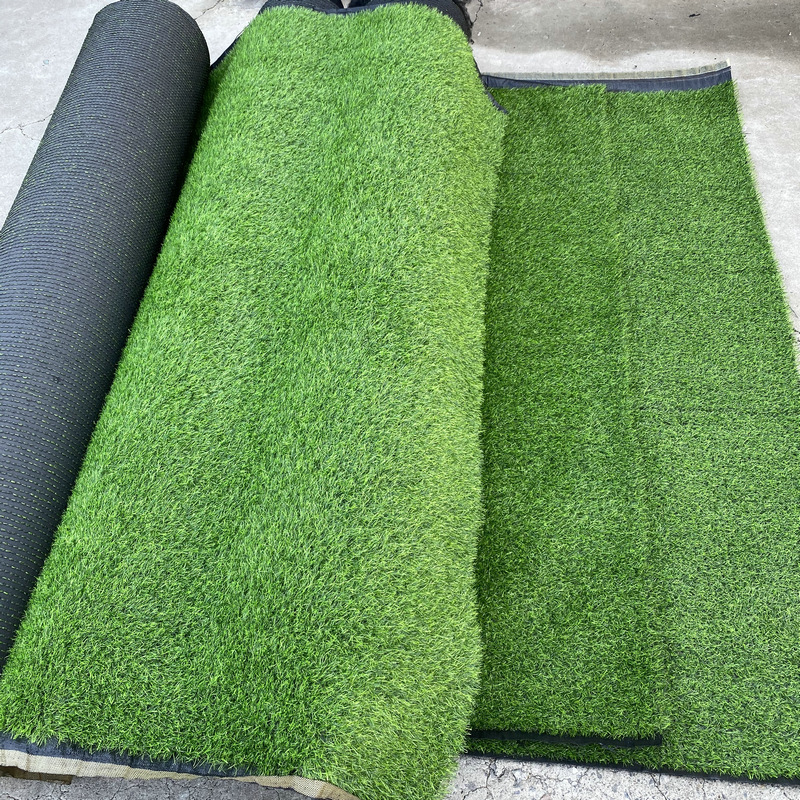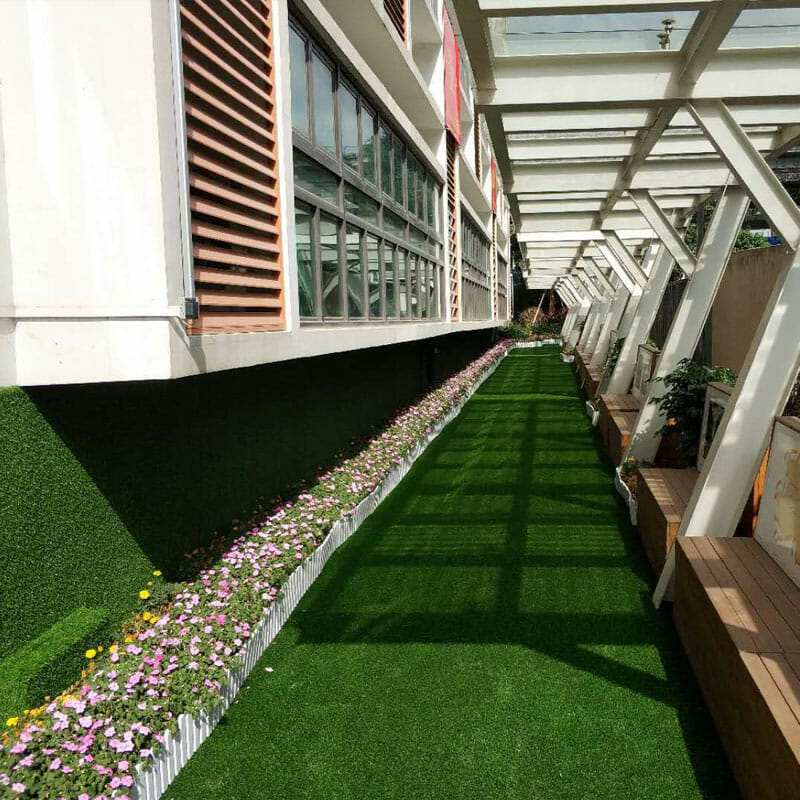
The integration of architecture and landscape plays a vital role in creating harmonious and visually appealing environments. In this context, artificial grass emerges as a versatile element that can complement architectural designs, enhance aesthetic appeal, and contribute to the overall ambiance of a space. This article explores the significance of artificial grass in design and its ability to soften rigid architectural lines, offer design flexibility, and promote a healthy and engaging landscape.
Softening Architectural Lines:
One of the key advantages of incorporating artificial grass in design is its ability to soften the rigid lines and structures of buildings. As natural grass tends to have a lower height, the introduction of artificial grass provides a contrasting element that creates visual interest and adds a sense of softness to the overall composition. By juxtaposing architectural features with the lush green texture of artificial grass, designers can achieve a balanced and harmonious visual impact.
Design Flexibility:
Artificial grass offers unparalleled design flexibility, allowing architects and landscape designers to explore creative possibilities. Its versatility enables it to be seamlessly integrated into various architectural settings, such as rooftop gardens, outdoor patios, and urban spaces. Whether used as a small accent area or as a sprawling landscape, artificial grass can be tailored to suit specific design requirements, providing a cohesive and visually appealing result.
Health and Well-being:
Creating landscapes that promote well-being and a healthy lifestyle is a growing trend in modern design. Artificial grass plays a significant role in achieving this goal by providing a low-maintenance, safe, and clean surface for various activities. Unlike natural grass, artificial grass eliminates the need for pesticides, fertilizers, and excessive watering, making it an environmentally friendly choice. Additionally, its cushioned surface reduces the risk of injuries during recreational activities, making it an ideal option for children and adults alike.
Creating a Harmonious Environment:
To achieve a landscape that contributes to overall well-being, it is crucial to ensure that architectural elements and surroundings are in harmony. Artificial grass acts as a unifying element, seamlessly blending architectural structures with the natural landscape. Its ability to complement and enhance the aesthetics of a space allows for the creation of visually appealing and cohesive environments. Whether in a residential setting, public parks, or commercial complexes, artificial grass can transform ordinary spaces into inviting and engaging areas.
Conclusion:
Artificial grass serves as a valuable tool in unifying architecture and landscape design. Its ability to soften architectural lines, provide design flexibility, and promote a healthy environment makes it an essential element in modern design practices. By incorporating artificial grass, designers can create visually stunning and harmonious spaces that seamlessly blend architecture with the surrounding landscape. Whether used in small accent areas or as extensive landscapes, artificial grass adds a touch of greenery, functionality, and aesthetic appeal to any design project.


